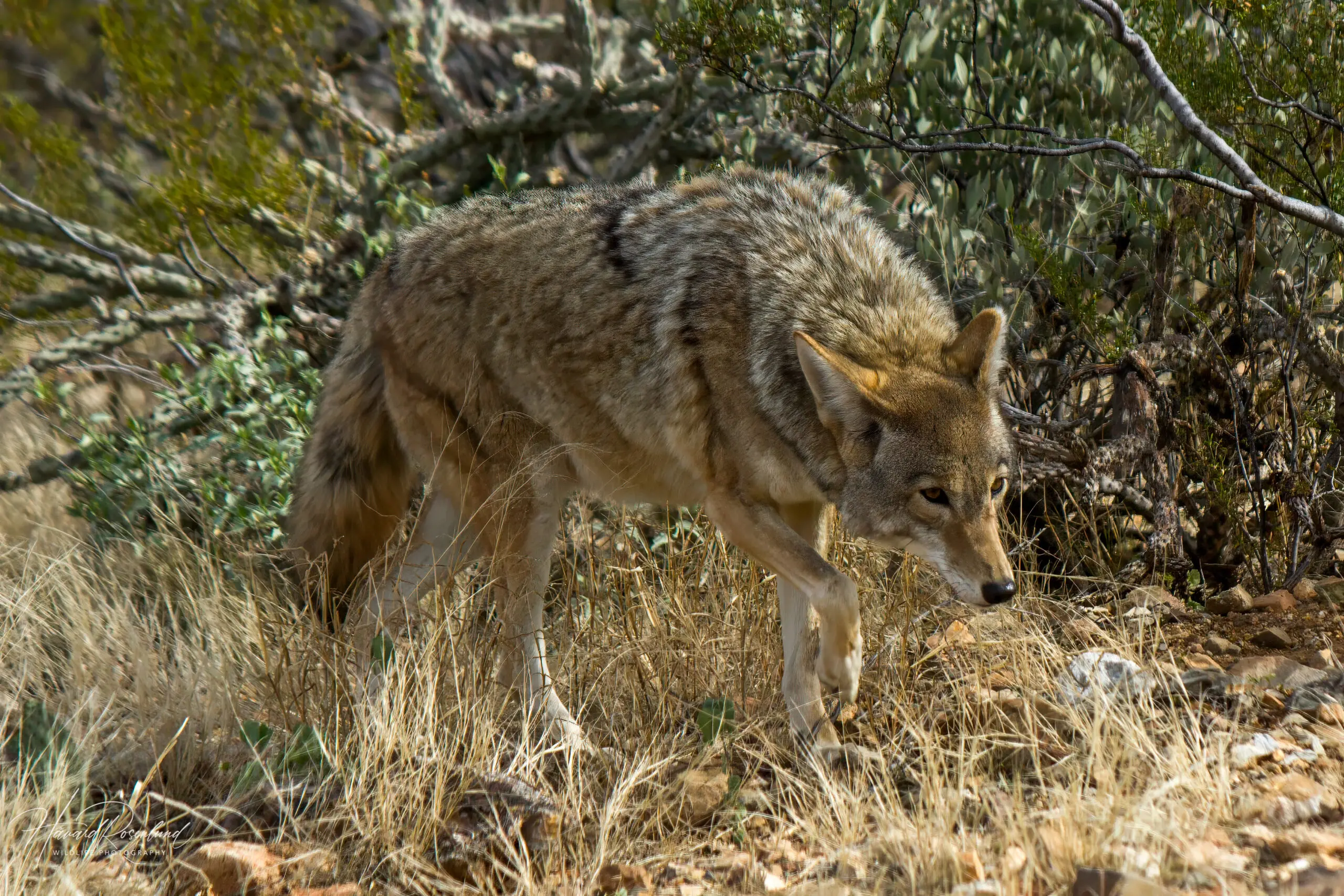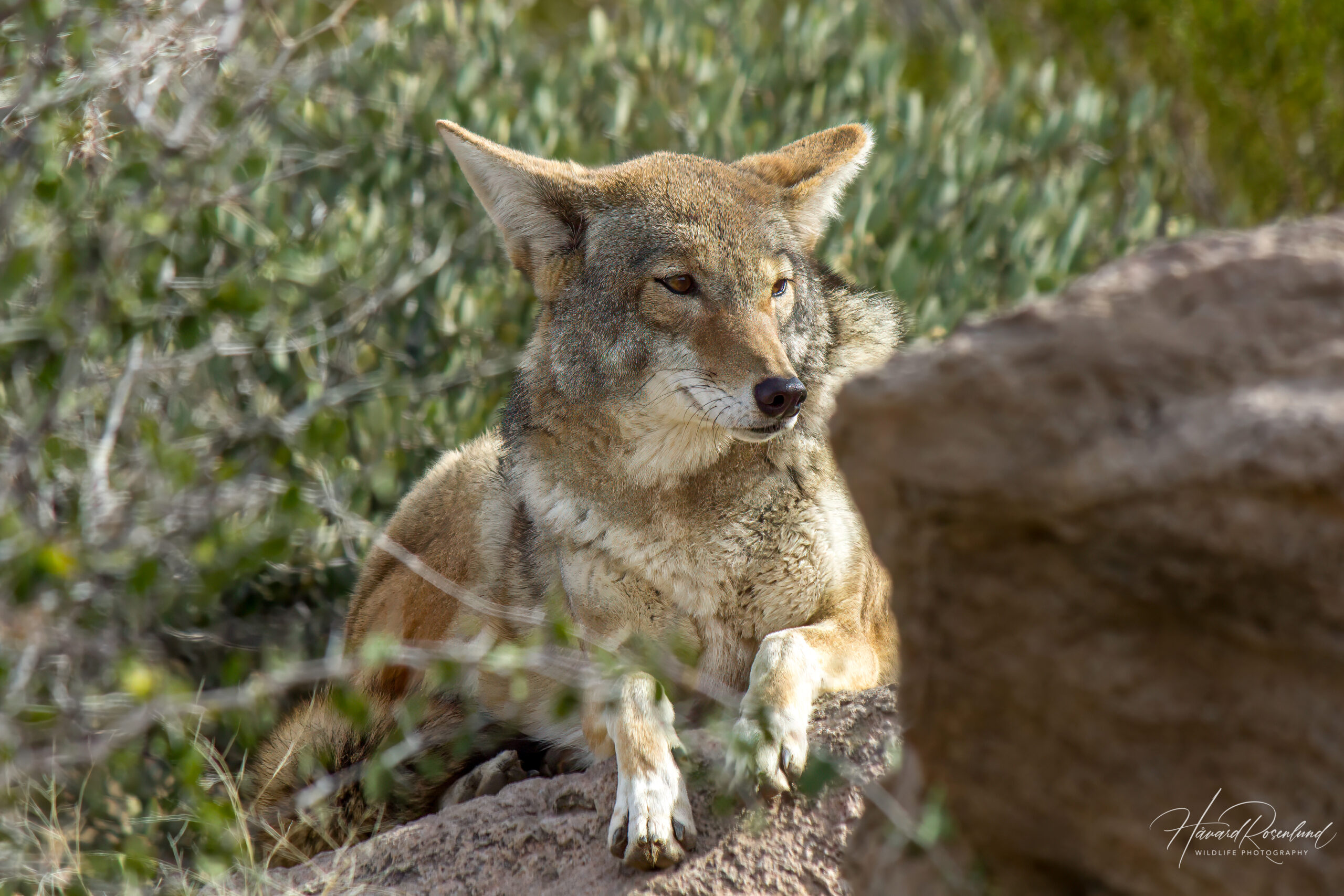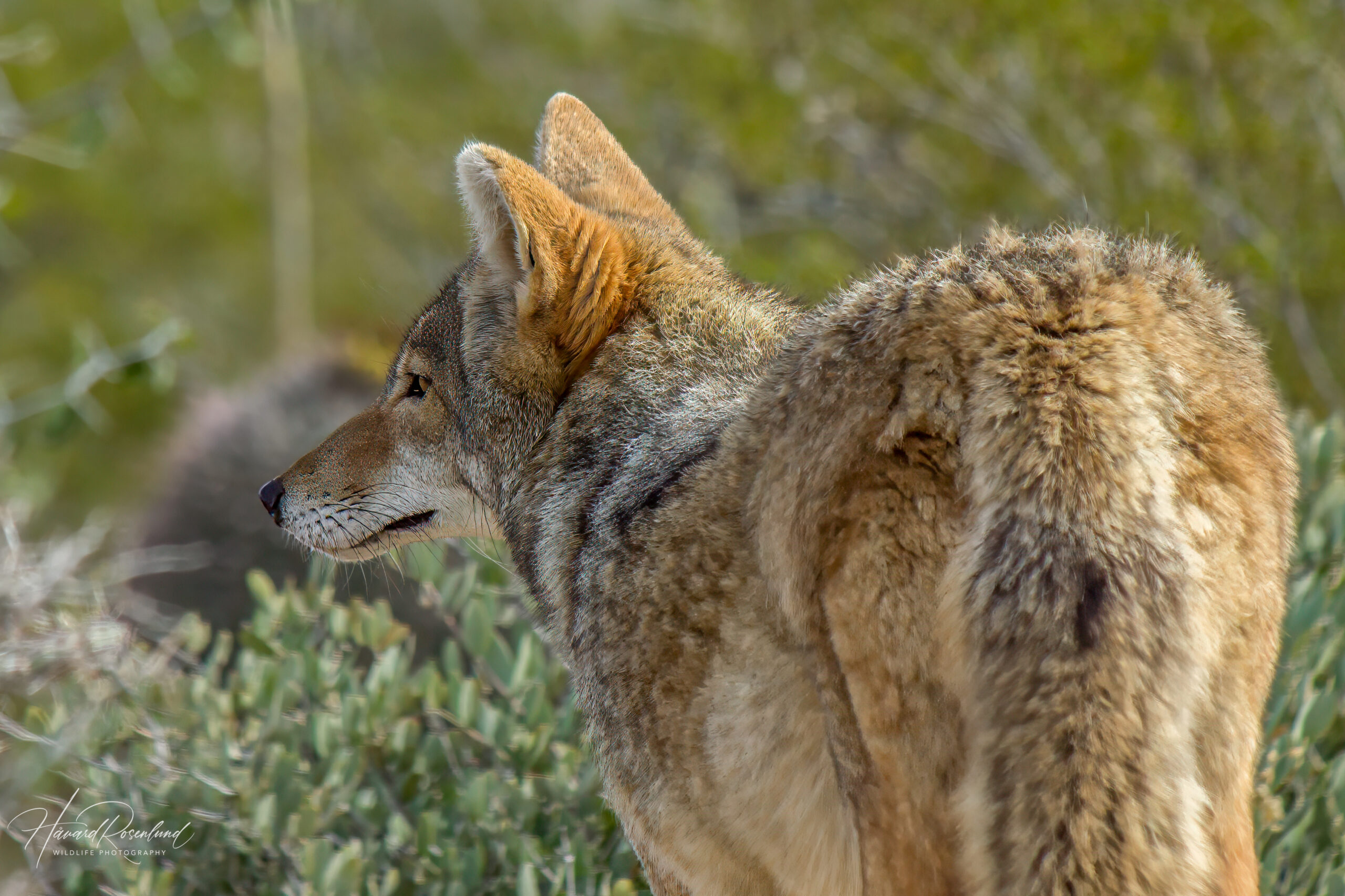Description
The coyote (Canis latrans) is a medium-sized canid related to the much larger grey wolf (Canis lupus). It is the American equivalent of the somewhat smaller jackals found in Africa and Asia. There are multiple subspecies, and size varies between them. It reaches an average shoulder height of 53-61 cm (21-24 in) and a weight between 7-20 kg (15-44 lb). Males are larger than females. The subspecies found in the colder northern regions tend to be much larger than the ones found in the warmer southern desert climate. Color is also variable, and can be from grey to reddish brown, sometimes with shades of black. Many specimens have reddish legs and ears. This differs from the gray wolf, which is predominantly grey with lighter or darker morphs. Coyote ears are also longer and more pointed than the ears of the wolf.
Habitat
The coyote is found in most habitats within its range, such as mountains, forests, deserts, and grasslands. It does particularly well in mixed habitats. It has also adapted well to human habitation, and it is often found in urban environments. Before the extermination of wolves, the coyotes were most often found in open prairies and desert areas where they had less direct competition from their larger relative.
Diet & feeding habits
The coyote is predominantly a carnivore, with 90 % of its diet being meat. Fresh meat is preferred, but it does readily eat carrion. The remaining portion of the diet consists of various fruits, vegetables, and grass. Prey species can vary from large animals, such as bison calves and elks, to insects and other invertebrates. Larger mammal species are hunted in packs, whereas smaller animals are chased and caught individually. The largest prey species, such as the mentioned elk, is most successfully hunted in wintertime, when the coyotes have the advantage of deep snow. Interestingly, individual coyotes have been known to form bonds with American badgers, as the two cooperate in catching smaller prey species, such as rodents and hares. Such pairs have even been observed resting together.
Social behavior
Because of their broad diet and less specialized nature, the coyotes do not need to live in packs, like big prey hunters such as wolves. Coyotes live both solitary and social lives. They can live in small family units centered around a reproductive female or in short-term packs with unrelated individuals. Such short-term packs often come together when preying on larger animals. A pack of unrelated individuals can be a group of bachelor males, non-reproductive females, and sub-adults.
Reproduction
When entering estrus, a female coyote will howl and scent mark to attract males. Up to seven males can follow her, but she will eventually only choose one male as her partner. After choosing her mate, any competing male will leave to find other females in heat. A mating bond, once established, my last several years. Females that fail to copulate might help related females in the rearing of pups or join with her siblings until she next comes into estrus. The mating pair will establish territory, in which they construct a den for the coming litter. The den can be made in rocky crevices, dense thickets or abandoned burrows created by other animals.
An average litter of six pups are born in early spring after a gestation period of 63 days. The litter number might fluctuate with population densities and prey abundance in the area. The pups open their eyes after 10 days and will begin to eat solid food after 12-15 days. They will be decreasingly dependent on milk after two months. By June-July, the pups abandon the den and will join the parents in patrolling and hunting. The pups may leave to fend for themselves in August but do sometimes stay with the family for much longer. They reach adult size after 8-9 months.
Status
The coyote is widespread with an extensive range across North America. It has gained a strong foothold in areas in which it historically did not occur because of the extirpation of wolves and its range is still expanding. It is listed as least concern on the IUCN Red List. Coyotes often kill livestock and, thus, is extensively persecuted by man. Around 90,000 coyotes are legally killed each year by the U.S. government for livestock protection. Urban coyote populations often lose their fear of humans when they are intentionally or unintentionally fed. This makes them prone to act aggressive towards people. Coyotes are also major carriers of canine diseases, such as rabies and distemper.









